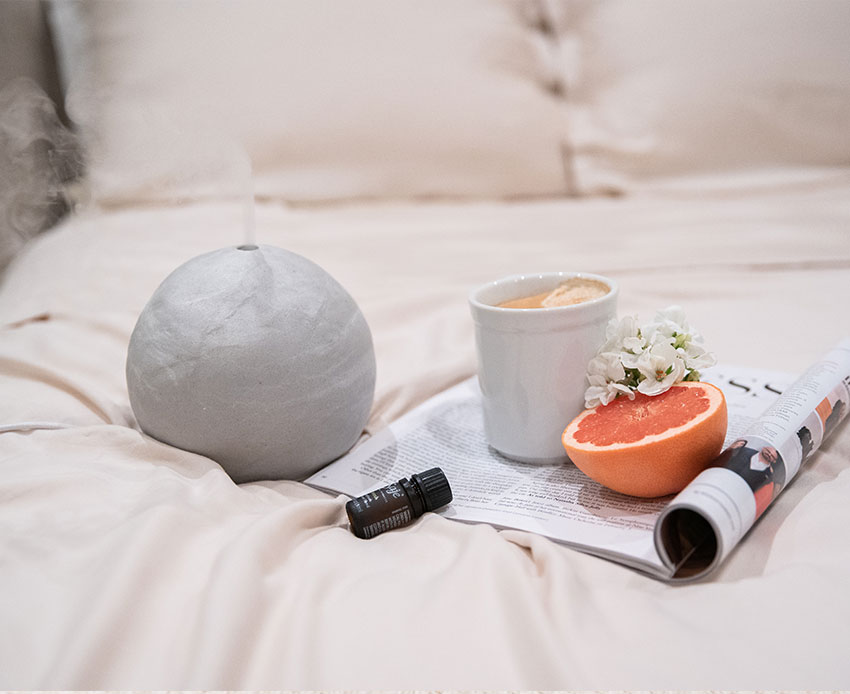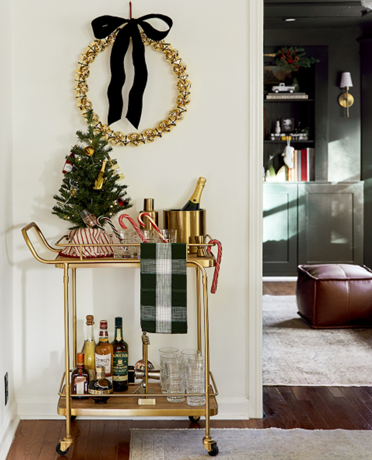Happy March, friends!
We all know that I LOVE Saje, and I love essential oils! There are many health and wellness benefits to adding essential oils into your home or routine, but it’s important to keep all members of your household in mind when using them. This includes pets like cats, dogs and any other animals that share your indoor environment!

Saje has outlined six helpful considerations when introducing these products into a home with pets.
1. Be Mindful of Change
Just as one size doesn’t fit all for humans, the same goes for pets. When it comes to adding anything new to their environment – essential oils or otherwise – they recommend keeping a close eye on how your pet responds to the change.
Here’s what to be mindful of:
- Pay attention to how your pet reacts and take note if they appear to be uncomfortable. If you notice any discomfort or agitation, move them to a well-ventilated room and stop using the product.
- If your pet appears to be in distress, contact your veterinarian or trusted animal practitioner right away.
- Make sure your pet is always able to leave the room freely and move to a different space.
- Be particularly mindful of pets that are in cages or enclosed spaces (like birds and small rodents) as they do not have the ability to leave the room if they become uncomfortable.
2. Avoid Ingestion
It’s important to note that ALL ingestion of essential oils is harmful to pets. Should you suspect your pet has accidentally ingested any essential oil product, please contact your veterinarian or trusted animal practitioner right away. When applying essential oils on yourself and then snuggling your pet, recognize that they may inadvertently inhale or lick essential oils, and there is a possibility of essential oils being absorbed through your pet’s skin.
Saje recommends:
- Waiting until topical products (like roll-on’s, mists, body oils or lotions, etc) and skincare products have fully absorbed into your skin before handling your pet.
- Keeping all product bottles tightly closed and away from your pets.
- Keeping diffusers and diffusers cords secure, so they won’t get knocked over.
3. Avoid Topical Application
The ability to tolerate essential oils, for both humans and pets, is dependent on many factors: what plant species the essential oil is derived from, the type of product, the dose administered, and how the product is applied. Essential oil-use cases show that one of the biggest risks of toxicity comes from direct application on your pet’s skin. At Saje, they err on the side of caution, and in knowing that there is a risk in applying essential oils to your pet’s fur or skin, they strongly recommend consulting with your veterinarian or trusted animal practitioner prior to the application of, or exposure to, any of their products. It’s better to be safe than sorry!
4. Less is More When Diffusing
There is a lot of information circulating on this delicate subject and Saje has chosen to defer to a leading safety expert in the Aromatherapy industry, Robert Tisserand. He shares the following in a blog post on his website.
“You can diffuse essential oils around cats safely, so long as there’s good ventilation, you only diffuse small amounts for limited periods of time, and your cat has the freedom to leave the room if it wants. A few parts per million of aromatic vapor in the air is not likely to be harmful, but be careful to avoid build-up of vapors over many hours.” – Robert Tisserand
Using a diffuser is a great way to freshen the air in your home, and is best done carefully when pets are part of your family.
If you choose to use your diffuser in the presence of your pet, they recommend:
- Using only small amounts of your favourite diffuser blend (1-5 drops max), and observing how your pet responds. A common reaction when a pet is not enjoying a particular is aroma is that they will leave the room
- Try diffusing for short periods of time (30-60 minutes), or consider a diffuser with an intermittent setting (for example, 30 seconds on, 30 seconds off)
- Ensuring the space is well ventilated, which might mean slightly opening a window for fresh air
- Always keeping a door open so that your pet can enter and exit the room easily
- Taking note of how your pet responds at all times. If you notice your pet resisting an aroma, discontinue use, move them to a well-ventilated space right away and consider contacting your veterinarian for more information

5. Products to Consider
While Saje has done the research on which essential oils are considered safe to be diffused around your pets, they always recommend checking in with your veterinarian should you have any concerns prior to use, and remember to be mindful about your pet’s reaction.
Here are the single notes they recommend starting with, and their suggestions are to seek out diffuser blends that include these single notes, or to diffuse these oils on their own. They recommend 1-5 drops of any of the following essential oils in a well-ventilated space:
- Cedarwood
- Clary Sage
- Eucalyptus (dog-safe, not cat-safe)
- Frankincense
- Geranium
- Lavender (dog-safe, not cat-safe)
- Mandarin & Orange (dog-safe, not cat-safe)
- Palmarosa (dog-safe, not cat-safe)
- Roman Chamomile
- Sandalwood (dog-safe, not cat-safe)
- Vetiver (dog-safe, not cat-safe)
6. What Saje Recommends Avoiding
Though this is not an exhaustive list, below are a few of the expert agreed upon essential oils to avoid diffusing in the presence of animals:
- Tea Tree
- Nutmeg
- Pine
- Lemon
- Peppermint
- Sage
- Rosemary
- Wintergreen
- Clove
- Cinnamon
When it comes to the health and safety of your pets, we want to encourage you to educate yourself and stay well informed. Trusted safety experts in the field of Aromatherapy include Robert Tisserand, Valerie Worwood, Peter Holmes, among many others. Saje is happy to support you in education as it relates to their products, and are committed to furthering education in the Aromatherapy industry. You can read their full FAQ here!
Thank you to Saje for their help with this blog post.
Happy Friday! Stay safe!





Leave a Reply